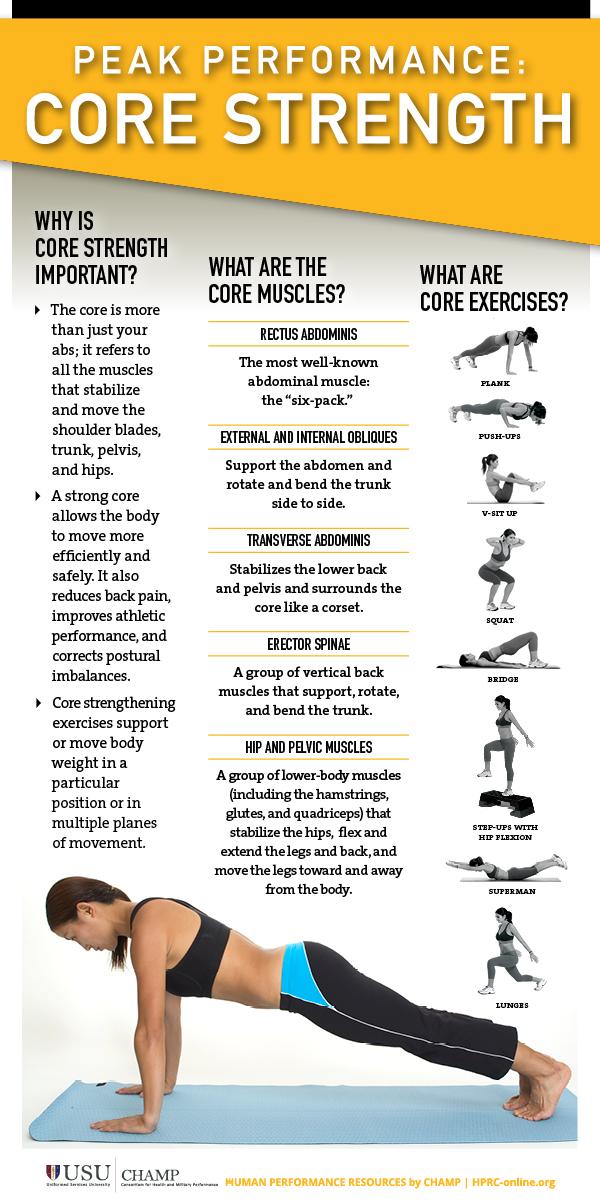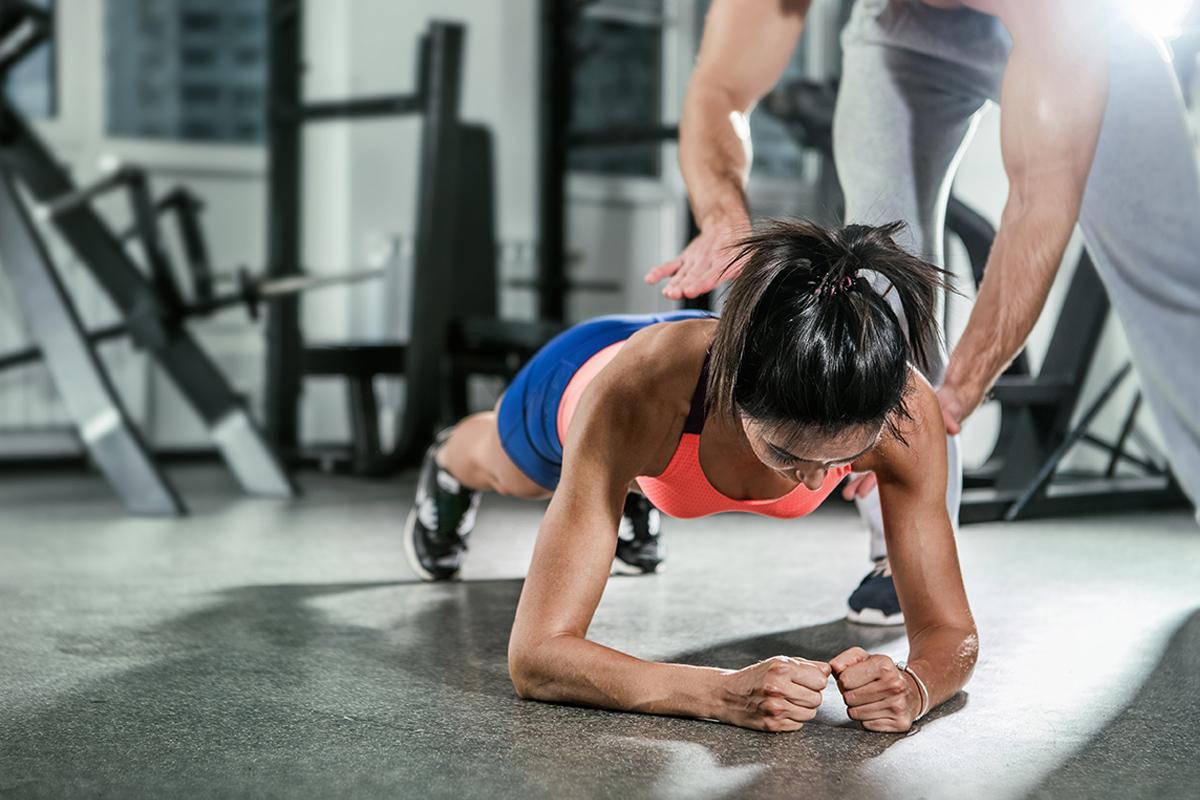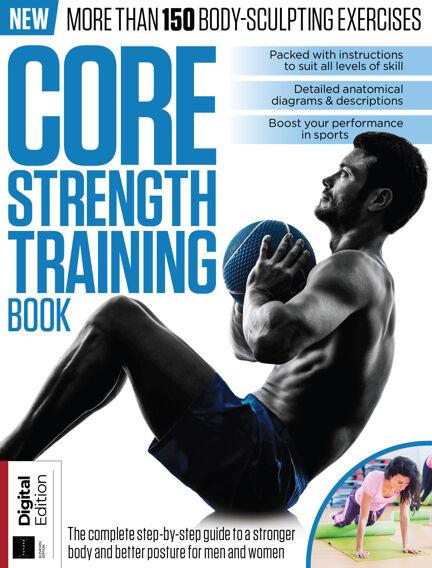In a world where functional fitness reigns supreme, mastering core strength is not just a trend—it’s a fundamental pillar of overall health and well-being. A strong core goes beyond having a sculpted midsection; it serves as the foundation for nearly every movement we make, from everyday tasks to athletic endeavors. Whether you’re an athlete striving to enhance performance, a busy professional seeking better posture, or simply someone eager to improve your daily energy levels, investing time and effort into developing your core can yield transformative benefits. In this article, we will delve into essential tips and techniques to help you build a stronger core, ensuring that you not only look your best but also move with purpose and confidence in every aspect of your life. Join us as we explore the critical role of core strength and how you can master it for a stronger, healthier you.
Table of Contents
- Understanding the Importance of Core Strength in Overall Fitness
- Key Exercises for Building Core Stability and Endurance
- Nutrition for Core Development: Fueling Your Body for Optimal Performance
- Incorporating Core Strength into Your Daily Routine for Lasting Results
- To Conclude
Understanding the Importance of Core Strength in Overall Fitness

Core strength is a fundamental component of physical fitness that extends beyond the realm of traditional workouts. When we refer to core strength, we’re not just talking about the muscles in your abdomen; it encompasses a complex network of muscles including the back, pelvis, and hips. A strong core plays a pivotal role in maintaining proper posture, enhancing balance, and increasing overall stability. This stability is crucial not just for athletes but for everyone, as it influences daily tasks—from lifting groceries to climbing stairs—reducing the risk of injury and improving performance in various activities. Without a well-conditioned core, even the simplest movements can lead to strain and discomfort.
Moreover, core strength is intrinsically linked to other fitness categories, such as endurance, flexibility, and strength. For instance, a strong core facilitates better form during weightlifting, allowing for more effective and safer lifts. It also enhances the efficiency of power generation in sports like running, swimming, and cycling, where rotational strength is indispensable. To gauge your core development, consider focusing on these key areas:
| Core Exercise | Benefits |
| Planks | Builds endurance and stability in the core muscles. |
| Russian Twists | Enhances rotational strength and definition. |
| Bridges | Strengthens the glutes and lower back, improving overall stability. |
| Dead Bugs | Develops coordination and control while offering a safe way to engage the core. |
Incorporating dedicated core training into your fitness routine not only cultivates a stronger physique but also promotes long-term health and functional movement. Remember, the core functions as the body’s powerhouse; a fortified foundation leads to improved strength across the board, allowing you to tackle more complex movements and workouts with ease. Thus, investing time in core exercises can yield a multiplier effect across your overall fitness journey, ensuring you remain agile and resilient.
Key Exercises for Building Core Stability and Endurance

To effectively enhance your core stability and endurance, incorporating a variety of targeted exercises into your routine is essential. These exercises not only strengthen the muscles around your abdomen and lower back but also improve your overall balance and posture. Consider including the following exercises in your workout plan:
- Planks: A foundational core exercise that engages multiple muscle groups, helping to increase endurance.
- Russian Twists: A dynamic movement that works the obliques, promoting rotational strength.
- Dead Bugs: Focuses on coordination between limbs while stabilizing the core.
- Bird Dogs: Enhances balance and strengthens the lower back and core simultaneously.
- Side Planks: Targets the side abdominal muscles, contributing to a well-rounded core workout.
Adding variety to your core workout can lead to better results. By progressively increasing the intensity and duration of your exercises, you can build substantial endurance. Here’s a quick reference table on how long to hold each exercise:
| Exercise | Beginner (seconds) | Intermediate (seconds) | Advanced (seconds) |
|---|---|---|---|
| Plank | 20 | 40 | 60+ |
| Side Plank | 15 | 30 | 45+ |
| Bird Dog | 10 (each side) | 20 (each side) | 30 (each side) |
Nutrition for Core Development: Fueling Your Body for Optimal Performance
To achieve optimal core strength, it’s essential to prioritize nutrition that supports muscle recovery and energy levels. A balanced diet rich in whole foods can enhance your performance and endurance during workouts. Focus on incorporating the following elements into your meals:
- Protein: Vital for muscle repair and growth. Aim for lean sources like chicken, fish, tofu, and legumes.
- Healthy Fats: Essential for hormone production and energy. Include avocados, nuts, seeds, and olive oil.
- Complex Carbohydrates: Crucial for sustained energy. Opt for whole grains, vegetables, and fruits.
Supplementing with hydration is equally critical, as water plays a key role in nutrient transportation and muscle function. Additionally, consider timing your meals to maximize performance; eating a combination of protein and carbohydrates before and after workouts can significantly impact recovery. Here’s a quick reference for pre- and post-workout snacks:
| Timing | Snack Ideas |
|---|---|
| Pre-Workout | Banana with almond butter; Greek yogurt with berries |
| Post-Workout | Protein shake; Quinoa salad with chickpeas |
Incorporating Core Strength into Your Daily Routine for Lasting Results
Integrating core strength exercises into your daily routine doesn’t have to be a daunting task. Start by identifying small windows of time throughout your day—during your commute, while watching TV, or even at your desk. These moments can be transformed into opportunities for strengthening your core. Here are some simple yet effective exercises to try:
- Seated Leg Raises: While sitting at your desk, lift one leg at a time, holding it for a few seconds before switching.
- Plank Hold: Find a quiet space to hold a plank position for 20-30 seconds. Increase your duration as you progress.
- Bridge Exercise: Lie on your back with knees bent. Lift your hips towards the ceiling, squeezing your glutes at the top.
Consistency is key to achieving lasting results, so aim to incorporate at least 10-15 minutes of core-focused activities into your day. To track your progress and stay motivated, consider using a simple table to visualize your efforts:
| Day | Exercise | Duration |
|---|---|---|
| Monday | Plank Hold | 30 seconds |
| Tuesday | Seated Leg Raises | 5 minutes |
| Wednesday | Bridge Exercise | 10 repetitions |
| Thursday | Plank Hold | 40 seconds |
| Friday | Seated Leg Raises | 7 minutes |
To Conclude
As we conclude our exploration of mastering core strength, it’s clear that building a solid foundation isn’t just about aesthetics; it enhances your overall well-being and performance in daily activities. The journey to a stronger core requires consistent effort, dedication, and the right techniques—integrating exercises, proper posture, and mindful movements into your everyday routine. Remember, the path to achieving a robust core is a marathon, not a sprint.
As you embark on this journey, keep in mind that every small step you take contributes to your overall strength and health. Celebrate your progress, no matter how incremental it may seem, and stay committed to your goals. Whether you’re lifting weights, improving your posture, or simply chasing your kids around the park, a strong core will empower you to pursue life’s adventures with confidence and vigor.
We encourage you to incorporate these tips into your routine and witness the transformation not only in your physical strength but in your quality of life as well. Here’s to a healthier, stronger you—let’s start this journey today!



